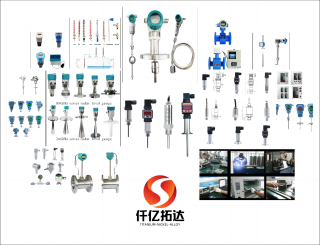Why is the ultrasonic flowmeter considered an intelligent choice for non-contact flow measurement?
[ 信息发布:本站 | 时间:2024-03-12 | 浏览:467 ]
Why is the ultrasonic flowmeter considered an intelligent choice for non-contact flow measurement?

The ultrasonic flowmeter is considered an intelligent choice for non-contact flow measurement due to several key reasons:
-
Non-Invasive Measurement: Ultrasonic flowmeters utilize non-invasive measurement techniques, meaning they do not require direct contact with the fluid being measured. Instead, ultrasonic sensors are mounted externally to the pipe or conduit, allowing for non-intrusive measurement without disrupting the flow process. This non-contact approach minimizes the risk of fluid contamination, pressure loss, or flow obstruction, making ultrasonic flowmeters suitable for a wide range of applications.
-
Reduced Installation Complexity: Non-contact measurement eliminates the need for cutting into pipes, inserting probes, or modifying existing flow systems, reducing installation complexity and costs. Ultrasonic flowmeters can be easily retrofitted into existing pipelines or installed in new systems with minimal downtime and disruption to operations. This ease of installation makes ultrasonic flowmeters a convenient and practical choice for various flow measurement applications.
-
Wide Applicability: Ultrasonic flowmeters are suitable for measuring the flow rates of various fluids, including liquids, gases, and steam, across a wide range of industries and applications. Their non-contact measurement principle allows them to be used in applications where traditional mechanical flowmeters may be impractical or unreliable due to factors such as fluid composition, temperature, pressure, or flow conditions. Ultrasonic flowmeters are commonly used in industries such as water and wastewater, oil and gas, chemical processing, HVAC, power generation, and pharmaceuticals.
-
High Accuracy and Reliability: Despite being non-contact, ultrasonic flowmeters offer high accuracy and reliability in flow measurement. Advanced signal processing algorithms, calibration techniques, and diagnostic capabilities compensate for environmental factors, such as temperature variations, pipe material, and fluid properties, ensuring accurate and repeatable measurement results. This accuracy and reliability make ultrasonic flowmeters suitable for critical applications where precise flow measurement is essential for process control, efficiency optimization, and compliance with regulatory requirements.
-
Minimal Maintenance Requirements: Ultrasonic flowmeters have minimal moving parts and require low maintenance compared to mechanical flow measurement devices. The absence of internal components subject to wear or corrosion reduces the likelihood of breakdowns, malfunctions, or performance degradation over time. This results in lower maintenance costs, reduced downtime, and increased operational efficiency for flow measurement systems.
-
Remote Monitoring and Integration: Many ultrasonic flowmeters feature digital communication interfaces, such as HART, Modbus, Profibus, or Foundation Fieldbus, enabling remote monitoring, control, and integration with industrial control systems, SCADA systems, and data acquisition systems. This connectivity facilitates real-time flow management, data logging, and analysis, enhancing operational efficiency and decision-making capabilities.
Overall, the non-contact measurement principle, wide applicability, high accuracy, reliability, minimal maintenance requirements, and integration capabilities make ultrasonic flowmeters an intelligent choice for flow measurement in various industrial, commercial, and municipal applications. Their versatility, ease of installation, and advanced features contribute to improved process efficiency, cost-effectiveness, and operational reliability in flow measurement systems
Shaanxi Qianyi Tuoda Technology Co., Ltd;
Email:qy002@sxqytd.com;WhatsApp +8618829679311
Magnetic Level Gauge|Magnetic Level Indicator|Magnetic Float Level Gauge|Magnetic Flap Level Gauge|Magnetic Liquid Level Gauge|Magnetic Level Instrument|Hydrostatic Level Transmitter|Hydrostatic Level Gauge|Static pressure level gauge|radar level gauge|radar wave level gauge|radar level meter|guided wave radar|Ultrasonic level gauge|Ultrasonic level meter|Ultrasonic level transmitter|Magnetostrictive liquid level meter|Magnetostrictive level meter|Magnetostrictive level sensor|pressure transmitter|Diffuse silicon pressure transmitter|differential pressure transmitter|Pressure sensor|Temperature transmitter|Pt100 sensor|Temperature sensor|Liquid Level Instrument: Radar Liquid Level Meter|Ultrasonic Liquid Level Meter|Magnetic Flap Liquid Level Meter|Magnetostrictive Liquid Level Meter|Float Level/Interface Meter|Pressure Instrument: Industrial Pressure Transmitter|Equipment Pressure Transmitter|Sanitary Pressure Transmitter|High Precision Pressure Transmitter|Temperature Instrument: Industrial Temperature Transmitter|Equipment Temperature Transmitter|Digital Temperature Transmitter|Flow Instrument: Electromagnetic Flowmeter|Turbine Flowmeter|Control Cabinet/Digital Display Box: Digital Display Box Control Cabinet
